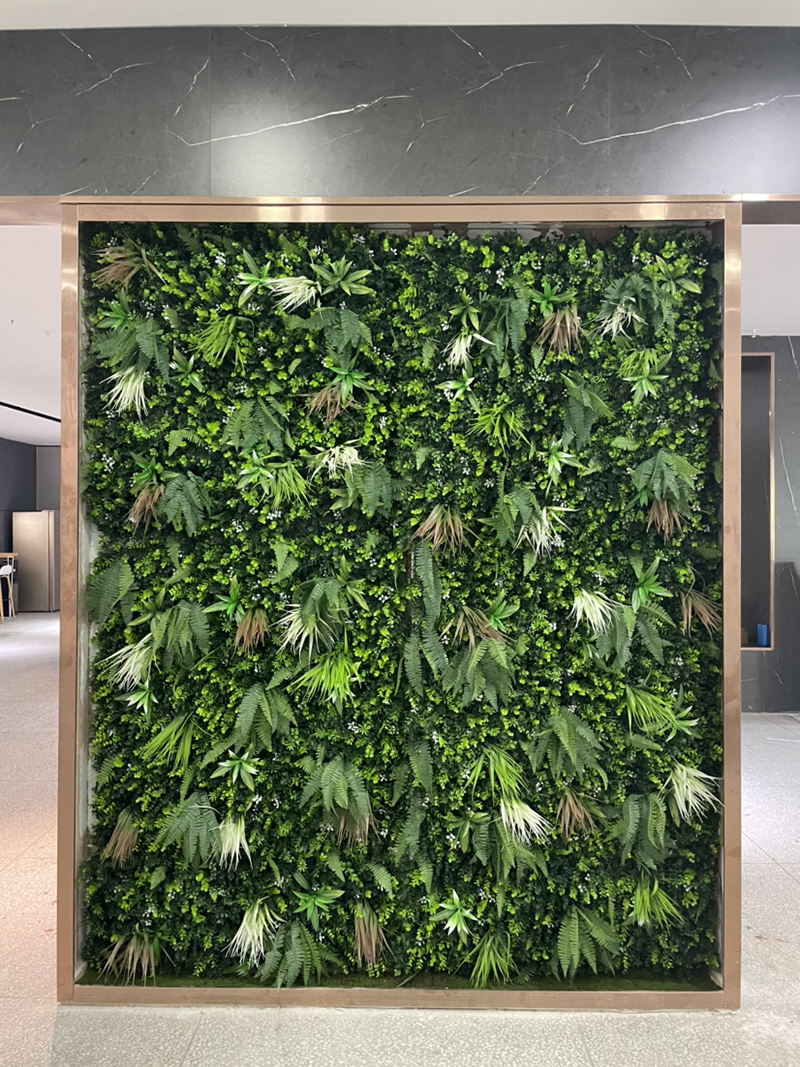3D Artificial Vertical Garden Landscape Lighting Design: Enhancing Aesthetics and Functionality
Creating a visually striking and sustainable 3D artificial vertical garden requires thoughtful integration of lighting design. Unlike traditional horizontal gardens, vertical installations demand strategic illumination to highlight their layered textures, dynamic shapes, and ecological narratives. Below are key considerations for achieving a harmonious balance between aesthetics, functionality, and environmental responsibility.

Vertical gardens thrive on visual complexity, with foliage, stems, and structural elements arranged in 3D planes. To emphasize this depth, lighting should be distributed across multiple layers. Upward-facing fixtures can accentuate the base of the garden, casting soft shadows that enhance the perception of height. Downward lighting from overhead structures or integrated panels helps define the garden’s silhouette while illuminating lower sections. For mid-level details, adjustable spotlights with narrow beams can draw attention to intricate patterns or focal plants, creating a sense of movement as viewers interact with the space.
Avoid uniform brightness, which flattens the garden’s 3D effect. Instead, use contrasting intensities to guide the eye upward or inward, mimicking natural light gradients. For example, brighter tones near entry points or seating areas can invite exploration, while dimmer zones deeper in the garden encourage tranquility.
The choice of color temperature significantly impacts the garden’s mood and realism. Warm white light (2700K–3000K) evokes a cozy, organic feel, ideal for residential or hospitality settings. Cool white (4000K–5000K) suits modern urban environments, highlighting the garden’s structural precision without appearing artificial. For creative installations, tunable white systems allow designers to shift temperatures seasonally or diurnally, adapting to events or time-of-day themes.
Dynamic lighting effects can further elevate the garden’s storytelling. Slow color transitions or gentle pulsing mimic natural phenomena like dawn or bioluminescence, fostering a connection to nature. However, avoid overly vibrant hues, which may clash with the garden’s foliage or distract from its ecological intent. Subtlety is key to maintaining a cohesive aesthetic.
Vertical gardens are often promoted as eco-friendly solutions, so their lighting should align with sustainability goals. LED technology remains the top choice for its longevity, low heat output, and energy savings compared to traditional bulbs. Opt for fixtures with high luminous efficacy (measured in lumens per watt) to maximize brightness while minimizing power consumption.
Incorporate smart controls to automate lighting schedules based on occupancy, daylight availability, or seasonal changes. Motion sensors can reduce energy waste in low-traffic areas, while daylight harvesting systems adjust brightness in real time to complement natural light. Additionally, prioritize dark-sky compliance by using shielded fixtures that direct light downward, reducing light pollution and preserving nocturnal ecosystems.
By integrating these principles, designers can transform 3D artificial vertical gardens into immersive, sustainable landscapes that captivate audiences day and night. Thoughtful lighting not only enhances visual appeal but also reinforces the garden’s role as a living, evolving artwork.
Contact: Amy
Phone: 86-15311787313
E-mail: info@foszmac.com
Whatsapp:86-15311787313
Add: Fengtai District, Dacheng Road, No.24 Building, Room 203, Beijing, China